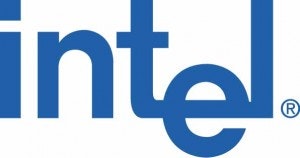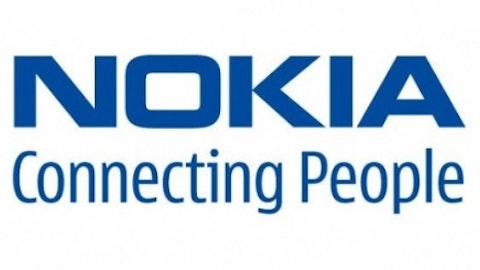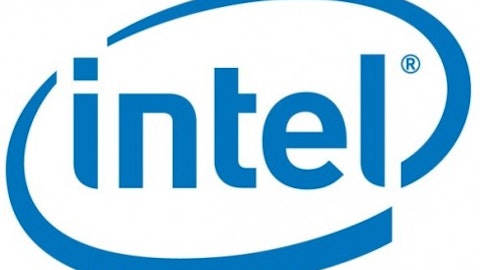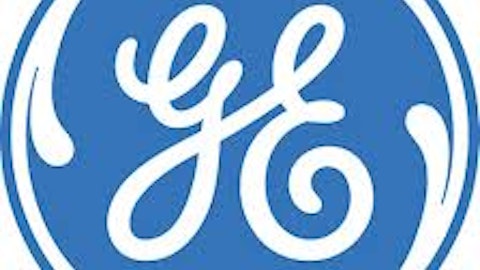
I believe the former is proper way to view Intel’s smartphone position, and expect the company to grow its market share significantly over the next year and a half. As a result, shares appear undervalued for long-term investors.
Just as good isn’t good enough
The Atom Z2580 may have been a reach by Intel Corporation (NASDAQ:INTC) to get into the smartphone market before it’s too late. While the dual core 32nm chip is fast and relatively power efficient, there’s no compelling reason for smartphone vendors to switch.
It’s not good enough for Intel Corporation (NASDAQ:INTC) to be just as good as ARM Holdings plc (ADR) (NASDAQ:ARMH) designs, which dominate the market, it needs to be better. Switching costs for companies create a barrier of entry, which is why the 0.2% market share Intel grabbed is underwhelming, but mostly expected.
Doing one better
The problem is the Z2580 is a somewhat crude solution. The architecture isn’t specifically designed for smartphones unlike ARM’s chips. Intel Corporation (NASDAQ:INTC) plans to change that, however, with its Silvermont redesign of Atom for smartphones.
Silvermont offers both better performance and power-efficiency than the current Atom processor core by capitalizing on Intel Corporation (NASDAQ:INTC)’s 22nm platform. More importantly, it’s significantly more efficient than the competition’s ARM Holdings plc (ADR) (NASDAQ:ARMH) designs.
In Intel’s presentation of Silvermont earlier this month, the company compared its dual-core solution to the quad-core competition from ARM. While, the sample may suffer from some bias, the results clearly show a distinct advantage over some of the latest ARM designs. Intel says its chips provide a 1.6x max performance advantage and use 2.4x less power at the same performance as ARM’s chips.
Those numbers create a story vendors can use to sell smartphones – 60% faster and longer battery life. The switching costs will surely be negated if Intel delivers on those numbers.
Joining this generation
Intel is finally joining the fold of LTE solutions this year. QUALCOMM, Inc. (NASDAQ:QCOM) has largely dominated the 4G modem market, and currently controls about two-thirds of it. In a head-to-head performance comparison conducted by Signals Research Group, Intel captured top honors for its LTE chipset. Those chips will start shipping within a few weeks, and ought to be able to capture a large portion of the standalone modem market. That market is generally tablet based, however, where designs often come with an optional baseband modem.
Most smartphones use modems integrated into the applications processor. This helps save power, and therefore allows for longer battery life.
QUALCOMM, Inc. (NASDAQ:QCOM) found a major success in this area with its integrated LTE Snapdragon chipset. The company got its chips into popular phones by HTC, LG, Sony, and even the vertically integrated Samsung’s Galaxy S4 (albeit the U.S. version only).
Intel plans to release an integrated LTE chipset by the first quarter of 2014. Based on the performances of its newest standalone applications processor and LTE modem, the company could have a real winner on its hands as more vendors adopt 4G capabilities.




